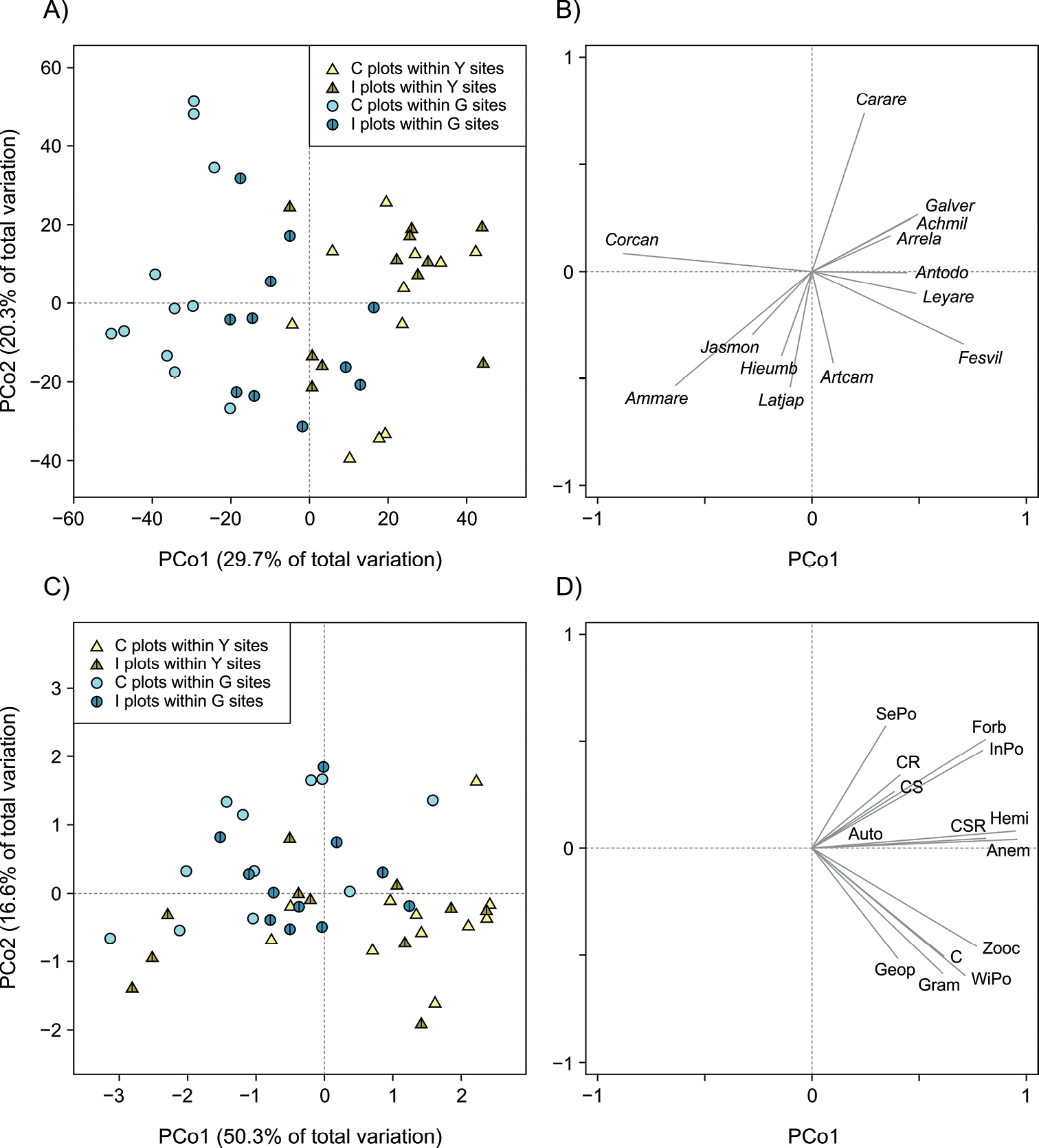
|
||
|
The results of principal coordinates analysis (PCoA) for resident plant species (A, B) and functional trait (C, D) data. PCoAs were based on Bray-Curtis and Euclidean distances, respectively. The left diagrams (A, C) show the position of C (control) and I (invasion) plots established within the Y (yellow dune) and G (grey dune) sites in the ordination space. The right diagrams (B, D) show the projection of species (B) and functional traits (D) on to the ordination space; for clarity, only species that correlated best (r > 0.4) with the PCoA axes were displayed. Explanation of acronyms of species names: Achmil – Achillea millefolium, Ammare – Ammophila arenaria, Antodo – Anthoxanthum odoratum, Arrela – Arrhenatherum elatius, Artcam – Artemisia campestris ssp. sericea, Carare – Carex arenaria, Corcan – Corynephorus canescens, Fesvil – Festuca villosa, Galver – Galium verum, Hieumb – Hieracium umbellatum var. dunense, Jasmon – Jasione montana var. litoralis, Latjap – Lathyrus japonicus ssp. maritimus, Leyare – Leymus arenarius. Explanation of functional trait acronyms: Forb – forbs, Gram – graminoids, C – competitors, CR – competitive ruderals, CS – stress-tolerant competitors, CSR – mixed strategists, Geop – geophytes, Hemi – hemicryptophytes, InPo – insect-pollinated, SePo – self-pollinated, WiPo – wind-pollinated, Anem – anemochores, Auto – autochores, Zooc – zoochores. |